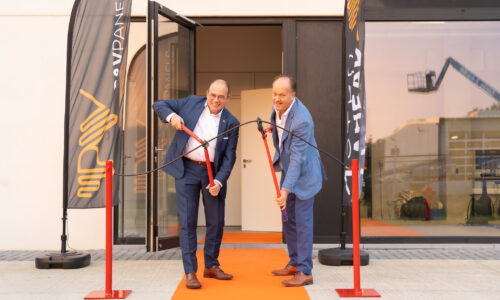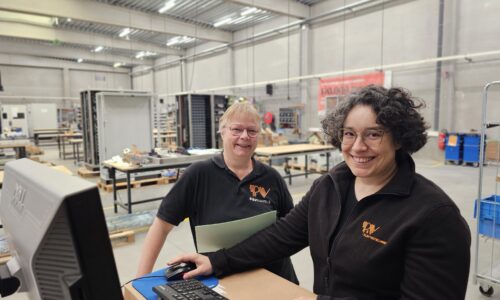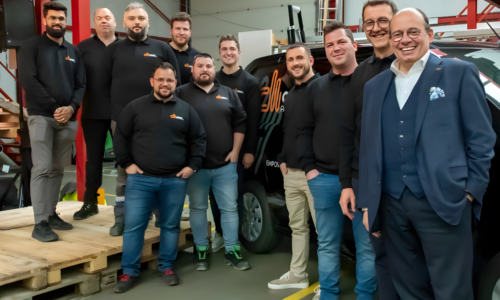Do you have a question?
If it is about control panels, we have the answer.
“Everything is linked, everything is MEASURABLE”
Quality is no coincidence. This text is hanging on a large panel in our studio. In a place everyone can easily see it. Quality Assurance Manager and HSE Officer, Kurt Caes, tells you how our test procedures guarantee the quality and reliability of your panels. To ensure you are 100% at ease.
“We design and build panels in three ways. A panel can be custom-made, repetitive or produced in a series. This requires different test procedures. Of course, it is simpler for repetitive and series boards. Because customisation means we are building something we have never built before.”
“Our quality control is a permanent part of every step in the process. From sales to delivery: we have implemented fixed procedures at every stage. Our colleagues can count on the support of the Quality Control team, a team that focuses on everything to do with testing.”
From project leader to engineering
“Quality starts with the project leader. It is his mission to map out the wishes of the customer. He does this so he can translate these into the right technical specifications. Our engineer is the next link. He translates those specifications into a design. And for every component he selects, our drawing software automatically generates a checklist. This means our engineer knows exactly what to check.”
“The panel builder receives the design with all the technical data. But ERP also generates a checklist automatically. This means he can see what the engineer has already checked and what he still needs to check. He only performs the first check, the second is carried out together with his team leader when the panel is ready.”
From builder to tester
“Quality Control then takes over. These colleagues do not build anything themselves, they have a specific specialisation in testing. They start from scratch: they check the engineer’s test phase, and double-check the inspection carried out by the panel builder. These tests always take place in accordance with the same procedure. Only when everything has been checked in accordance with the set standards, and every possible problem has been resolved, does the tester release the panel.”
“During the FAT or Factory Acceptance Test, we from P&V have a supporting role. We provide everything so the customer’s tester can do his thing. And he then works through his own list. He knows what comes before and after our panels, so he can carry out specific testing,” says Kurt. “Everything is measurable now. This allows us to further improve our quality. Suppose the final test carried out by Quality Control reveals another fault. We then know exactly where in the process. And we can draw the right conclusions from that and link the right actions to it.”
“Is it a one-off error made by the engineer, builder or tester, for example? We can then make him aware of this. Is it a structural fault? Can we recognise a certain pattern in a certain phase? Maybe it has to do with our way of working then. It may be something for our improvement team to think about. This team comprises of an overarching team of developers, engineers, project leaders and workers who analyse and optimise our processes.”
Fully integrated
What did quality procedures look like in the past? “We used to work with a web based system, but now our test procedure is integrated into our ERP system and our design software. Everything is linked. This allows us to follow a panel at all times. Where in the process is it? Which tests have already been carried out? Was there a problem somewhere?”
“Two years ago, we took new steps to further professionalise our quality procedures,” Kurt recalls.
“This spring we rolled out all the improvements. I think I can say that, in the past, we already distinguished ourselves from other companies in the field of quality testing. But we choose to keep investing.”
“This is because we want the quality to be even better. We owe it to ourselves and our customers – if we, as P&V, want to claim that we are the best, we have to make sure we are,” concludes Kurt. “Because better quality means a better company guarantee. Guaranteed uptime. And the absolute certainty that our panel will do what it is supposed to do and will never be a concern for our customer when it arrives on site.”


